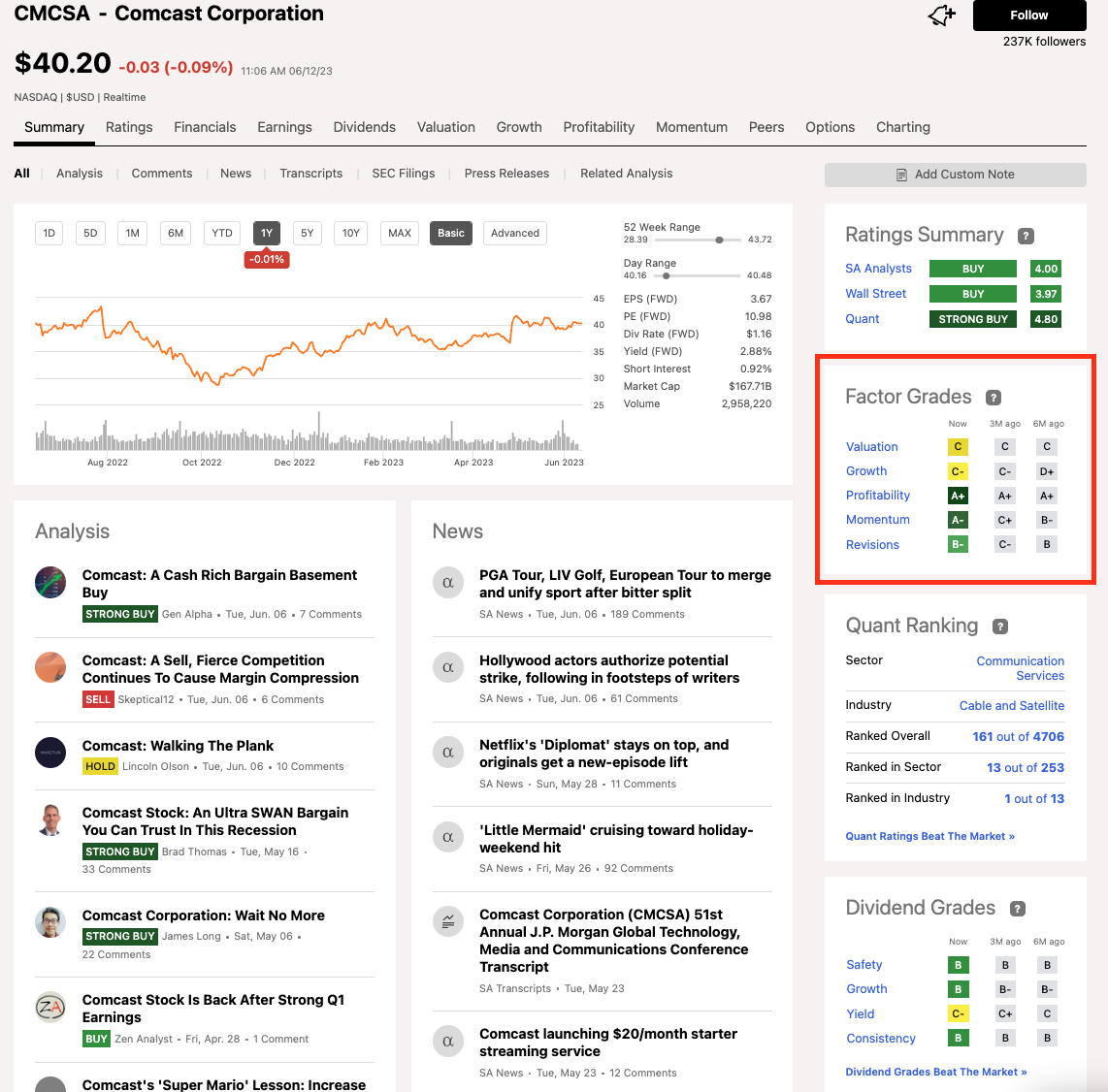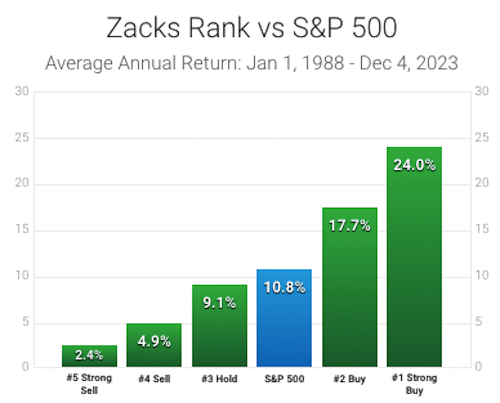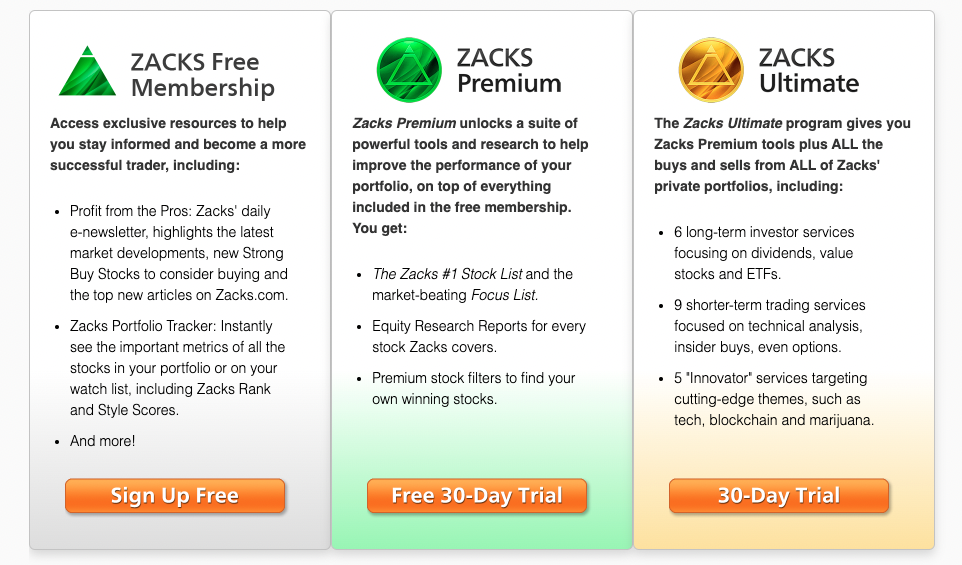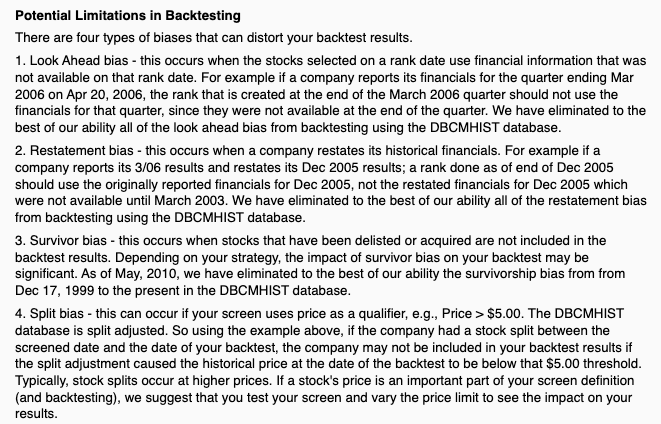Zacks Review: Should You Pay for Premium in 2024?

Zacks Investment Research is a stock research website that aims to help individual investors make better investing and trading decisions.
The platform is based on a proprietary rating system developed by Len Zacks, an MIT researcher, in 1978. He discovered “the most powerful force impacting stock prices” and built a company around it.
If you're curious what that force is and how effective the Zacks system is in 2024, keep reading. I cover all that and more (including some questionable performance reporting metrics) in this Zacks review.
Here's everything I learned after testing Zacks Premium myself.
Is Zacks Premium worth it?
- Overall rating:
- Our take: No, Zacks Premium is not really worth the $249 annual cost.
Tracking earnings per share (EPS) revisions, which is what the entire Zacks Rank system is based on, was a revolutionary idea in the 1970s and 1980s. However, this tracking is now a key part of fundamental research.
Today, information flows far more freely than it used to, and any advantage Zacks Rank used to provide to investors is likely gone.
If you're looking for a high-quality investment research platform to help you research stocks, you will be much better off with a more comprehensive tool like Seeking Alpha. As it happens, Zacks entire system can be found in a single check on Seeking Alpha.

You can read my full Seeking Alpha Review here.
Now let me explain why I believe the Zacks system is outdated and what my experience was using their service.
What is Zacks Investment Research?
Zacks was founded by Len Zacks, a Ph.D.-level researcher at MIT, in 1978.
After spending nearly 10 years analyzing stocks, Zacks observed that Wall Street analysts' earnings estimate revisions were a leading indicator of future stock prices.
This discovery, once further proven, led to the Zacks Rank system, which became the foundation of the Zacks Investment Research company.
The company's mission is to help individual investors cut through the noise by providing quantitative research about what it believes to be the biggest impactor and predictor of stock prices — earnings estimate revisions.
What is the Zacks Rank system?
Zacks Investment Research is built around Zacks Rank, the company's quantitative stock-rating system, which grades stocks on a scale from #1 Strong Buy to #5 Strong Sell.
Zacks Rank is based on analyst earnings estimate revisions, which Len Zacks observed as the strongest force impacting stock prices. Each stock's grade is driven by analyst coverage and EPS revisions, both positive and negative.
The underlying theory is that positive EPS revisions are bullish, while negative revisions are bearish.
Just the top 5% of stocks with the most potential, according to the system, make up Zacks Rank #1 List, which has averaged more than double the returns of the S&P 500 each year for about 35 years:

How it works: an example
To see the system in action, consider the following example:
A stock is trading at a forward P/E of 20x and next year's average EPS estimate is $1, meaning the stock is trading at $20.
After the company publishes a report about a new product, two analysts update their EPS estimates and lift the forecasted average EPS to $1.50. Assuming investors are still willing to pay at least 20x forward earnings, this would imply shares should now be trading at $30.
With shares at $20, the stock may be marked a #2 Buy or #1 Strong Buy.
Conversely, if these analysts had doubts about the new product and lowered their EPS estimates, the average EPS forecast might fall by $0.75, implying shares should be trading near $15. With shares at $20, the stock may be marked a #4 Sell or #5 Strong Sell.
More about Zacks Rank
Currently, Zacks tracks around 3,000 analysts and 200,000 earnings estimates.
Zacks Rank then aggregates the earnings estimate data and quantitatively ranks every stock depending on the sentiment of the analysts covering it.
There are four primary factors behind Zacks Rank:
- Agreement: The higher the percentage of analysts revising their estimates higher, the better the score. For example, 80% of analysts revising higher is more bullish than 20% revising higher.
- Magnitude: The higher the revision, the better the score. For example, a 50% increase is more bullish than a 10% increase.
- Upside: The bigger the difference between the most accurate estimate, as calculated by Zacks, and the average estimate, the better the score.
- Surprise: Companies with positive earnings surprises in the past are more likely to surprise again in the future.
Each component is recalculated every night, meaning Zacks' ratings are constantly updating.
It's worth noting that Zacks has many other features as well, including investment research, a stock screener, expert picks, economic reports, industry rankings, and more.
What does Zacks Premium offer?
Zacks Premium is 1 of 3 membership options on Zacks.

The focus of this article is Zacks Premium (the service I'm most familiar with), which is the offering targeted toward long-term investors. Zacks Ultimate includes everything in Zacks Premium plus a handful of features and exclusive research for traders for $2,995 per year.
Here's a complete look at the features included with a Zacks Premium subscription:
- Zacks #1 Rank List: 220 of Zacks “best in class” stocks, derived from the Zacks Rank system.
- Equity research reports: In-depth research and 6- to 12-month price targets on more than 1,000 stocks.
- Zacks Industry Rank: Easily uncover the best stocks in the best industries.
- Earnings ESP filter: Buy or sell stocks before they report using Zacks ESP (expected surprise prediction) metric to predict earnings.
- Pre-built stock screens: 45+ Zacks stock screeners created to find stocks set to outperform the market.
- Focus List: 50 stocks expected to outperform the market over the next 12 months.
- Zacks Confidential: Hand-selected stock picks and insights from the Zacks team of in-house experts.
Despite all these features, whether or not you should subscribe to Zacks Premium comes down to whether the Zacks Rank system is still viable in 2024. To me, it's not.
I'd rather spend my money on a subscription to Seeking Alpha. Seeking Alpha has almost every feature Zacks has, plus far more nuanced investment research, a better-designed website, and a cheaper price tag.
The 3 problems with Zacks
I have three problems with Zacks Rank and paying for a Zacks Premium subscription: (1) the system is outdated, (2) paying for premium is unnecessary, and (3) the reporting limitations.
1. The system is outdated
The question you need to answer when considering a Zacks Premium subscription is whether or not you believe the Zacks Rank system is still a viable way to predict stock price movements.
In my opinion, it isn't.
The stock market is one of the most efficient markets in the world, if not the most efficient. Simply put, market efficiency means stock prices reflect all available information, including earnings revisions.
For the Zacks Rank system to work, it needs to 1) have found a market inefficiency and 2) have that inefficiency ignored by the millions of investors who are trading trillions of dollars worth of securities every day.
When Zacks was launched in the late 1970s, I believe Len Zacks may have uncovered a market inefficiency. That inefficiency is no longer an inefficiency, as investors are well aware of how analysts' estimate revisions impact stock prices.
In other words, it's priced in.
This hypothesis is further proven by the number of different services, tools, stock lists, and other offerings that come with the service. If the Zacks Rank system was that good, the company wouldn't offer the countless other bonuses it includes with your subscription.
Instead, the plethora of offerings feels like Zacks is trying to overwhelm potential subscribers with services that seem valuable on the surface but lack actual substance.
You might find trade ideas or uncover potential catalysts on the site, but I would not invest solely based on the Zacks rating system.
While it'd be much easier to invest based on one quantitative check, in reality, the stock market is incredibly nuanced. The investment research platform you pay for should reflect that reality.
It's also worth noting that the Zacks website itself — like the rating system it's based on — is outdated and rather clunky, giving me the impression it hasn't been updated in a long time.
2. You don't actually need Zacks Premium
Even if you're a believer in the Zacks Rank system, you can go to the Zacks website right now, look up any stock you want, and see its ranking.
For instance, Tesla (TSLA) stock is currently marked a #5 Strong Sell:

You can do this for an unlimited number of stocks and never bump into a paywall.
If that's not what's behind the paywall, what is?
The bulk of the value that's hidden behind the paywall is the Zacks #1 Rank List — the list of the top 5% stocks based on analyst earnings estimate revisions.
After spending some time on the website and digging through the Zacks Rank system, I was more than a little curious to find out what stocks were on this list.
But within 15 minutes of starting my free trial, I knew it wasn't for me. 99% of the stocks on the Zacks #1 Rank List weren't for me — they were stocks I would never buy.
That said, I'm a long-term investor (part of the reason I love Seeking Alpha), and I wouldn't be surprised if swing traders were able to find some value in Zacks Premium.
But for me, this definitely isn't the right service.
3. Zacks performance reporting has limitations
The biggest selling point for Zacks are the images of its performance, such as the one shown above or this one below:

However, upon further investigation and reading the fine print, I came across a few interesting discoveries in Zacks performance disclosure.
Zacks portfolio returns were calculated with a monthly rebalancing until December 2013, then switched to weekly rebalancing. This is notable for long-term investors, as the stated returns should only be expected by swing traders.
For these traders, it's important to note that Zacks is not including commissions, slippage, the bid-ask, or other common trading fees in its return calculations:

Zacks does not show backtested results — it shows a hypothetical portfolio that was calculated monthly or weekly. For investors who want to confirm its results by backtesting, the company puts forth the following disclosure:

In other words, don't expect to get the same results as you'll find on its performance page.
While I don't think Zacks is alone in this type of data scrubbing to show exceptional performance results, it shouldn't be ignored. As is the case with almost every investment research service you'll come across, do not expect to get the exact results they advertise.
Final verdict: Zacks Premium review
Tracking EPS revisions may have worked in the 1970s, but investing in 2024 is very different.
The market is more efficient now and information flows extremely freely. Whatever inefficiency Len Zacks found back then is no longer relevant today.
Yes, you can use EPS revision data to help you gauge how analysts feel about a company's earnings, but millions of other investors are also using the same data. This should be just one piece of data when considering investing in a stock, not your entire due diligence process
Furthermore, even if you want to check out a stock's rank according to this system, you can do so for free on Zacks without a Premium subscription.
To that end, Seeking Alpha is my favorite investment research platform and includes revisions in its Factor Scorecard. In my opinion, Seeking Alpha is a much more complete offering and recognizes the nuances of investing in today's stock market.
For a limited time, our readers can take $50 off Seeking Alpha Premium and get a 7-day free trial with the link below:


.png)



